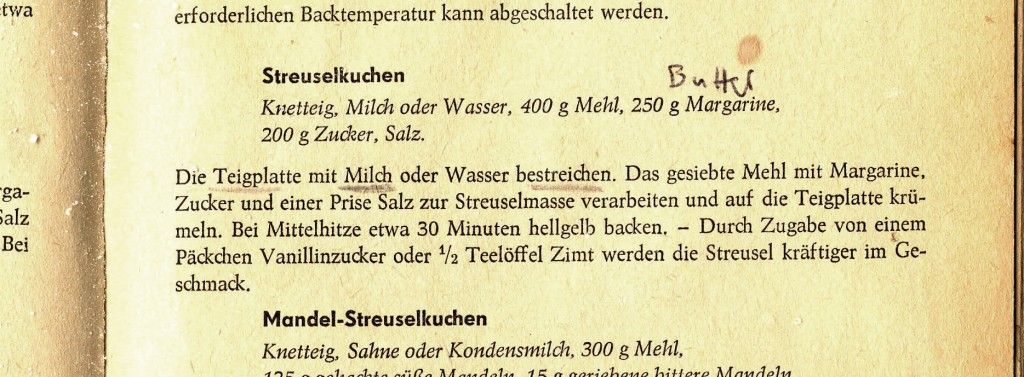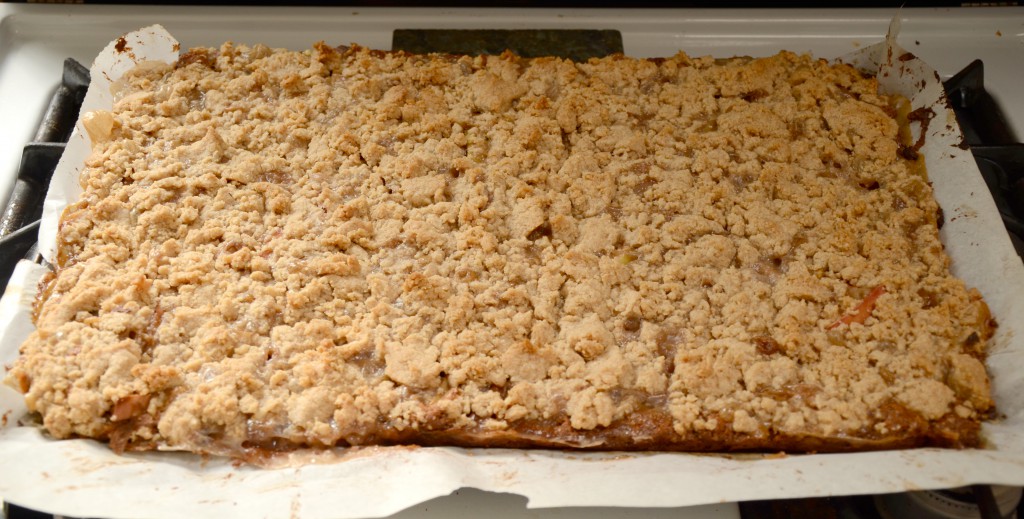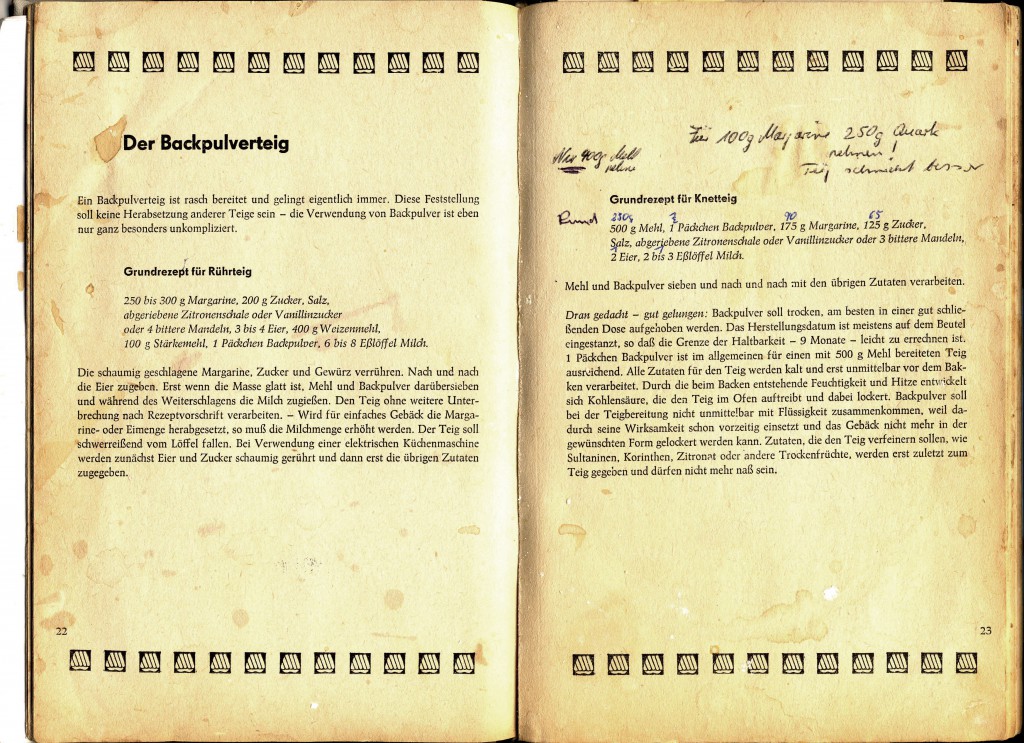01 What is Open Source?
Basically, it’s just like sharing a recipe…

The easiest way to explain the basic principle of Open Source is to go along a recipe. In this case, the recipe of my favorite cake.
At the bottom I wrote down all it takes to reproduce my favorite kind of „Streuselkuchen“ – the scans of the recipe already have some adaptations from my mum in them, so she „forked“ it.

Now you can take this recipe and adapt it to your taste, equipment, needs and resources. Maybe you notice that I use „Quark“ for the dough and you realize you don’t know where to get „Quark“ in your country or not even know what it is (in french it is fromage blanc btw).
So you maybe replace Quark with buttermilk, yogurt or ricotta cheese OR you produce your own Quark (for those of you in the US: check your Whole Foods Stores).
This could all possibly change the outcome, but it definitely changes the way the cake is made. Now, if you share this knowledge including the information about how you made it (documentation) and what the result is you have basically „forked“ my cake. There is now a new version of „my“ cake out there.
Also you could sell the cake in a Coffee Shop or take pictures of it and use those for your portfolio or sell them to any stock photo website. It’s free to use.
If a product is truly open source it is well-documented and published under an open-source-license. This is a license that allows others to study, use, copy, modify, distribute, make and sell the documentation as well as the documented product. Depending on what you make open source you pick the fitting license. There are different licenses for open source software, open source hardware or texts and images. The license for this article for example, is the Creative Commons-Attribution-Share-Alike.
For more information check out the Creative Commons Website and this video that quickly explains to you the various aspects of Open Source:
And now, wander off and fork yourself a cake!
*******************************
Ottilie’s favorite Streuselkuchen Recipe

List of Ingredients
Crumbs
400g Flour (*1/2 Spelt, 1/4 Whole Wheat, 1/4 plain, or whatever you got)
250g Butter (unsalted)
200g Sugar (*Whole Raw Rapanua Cane Sugar)
tiny bit of Salt and some Vanilla flavor
Dough
400g Flour (*proportions see crumbles)
1 package of Baking Powder
75g Butter
250g Quark (without Quark you need to have 175g of Butter instead of 75g)
Tiny bit of Salt
A bit of Vanilla
2 Eggs
2–3 spoons of Milk or Water
*=these are my personal adaptations
Topping/Filling
Fruit: Any fruit you like and think fits the taste, e.g. plumbs, cherries, apples, pears, banana etc. cut in equally sized pieces.
Pudding: 500ml Milk (*made from spelt, oat or soy)
Package of Vanilla Pudding (basically starch with flavor)
1–2 spoons of sugar
Worktime: 20–30min, oven time: 30–40min, at 180°C (with ventilation) or 220°C with top-bottom heating

Making the Cake
Start with the crumbs. Mix ingredients in a bowl, knead them together. Easier when butter has room temperature, thus softer. Set them aside in a bowl.
Dough: Mix dry ingredients first using a strainer. Then add Butter, Quark and Eggs. Mix together using hands (will be somewhat sticky), if too sticky add more flour.
Preparing the tray: Spread a thin layer of butter on the oven tray by using the wrapping foil of the butter or use baking paper to keep the dough from sticking. Lay out dough on the oven tray. Once the dough is spread cover it with pieces of cut fruit.
Pudding: Use some of the milk to dissolve the starch in. Add sugar or any other sweetener. Heat up the rest of the milk, once that starts to boil, pour in the starch-milk-mix and stirr hard right away to keep milk from burning until pudding has thickened.
Tipp: Before putting the milk in the pot wetten it inside with cold water and don’t stirr it at all OR stirr it constantly to avoid burning the milk.
Once the pudding is thickened pour and spread it over the fruit (you can put pudding first, too – it works both ways).
Now crumble the crumbs, shovel it in the oven, wait and…
Voilà! Bon Apetit!